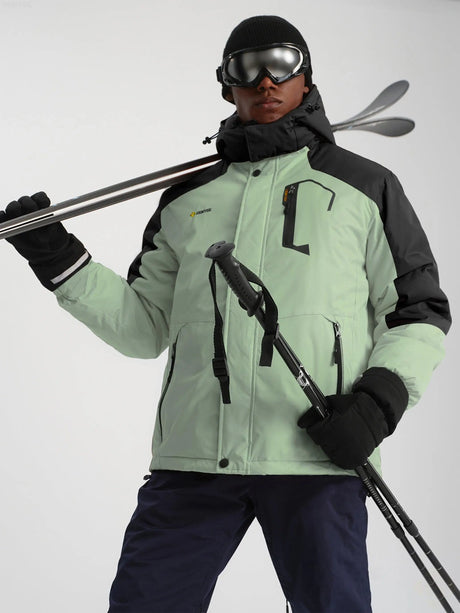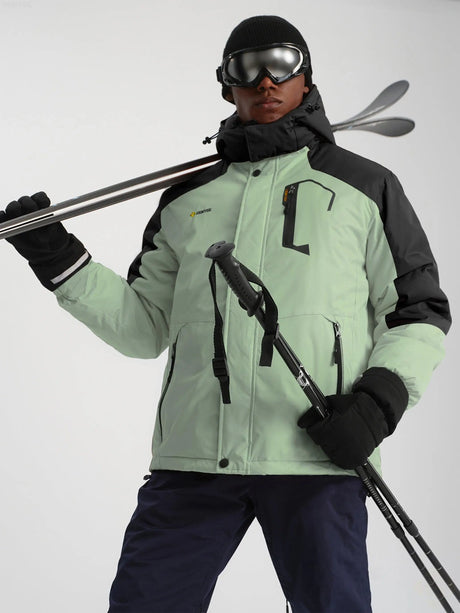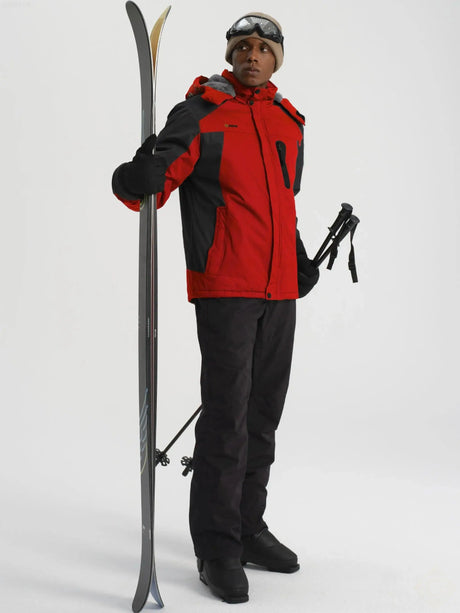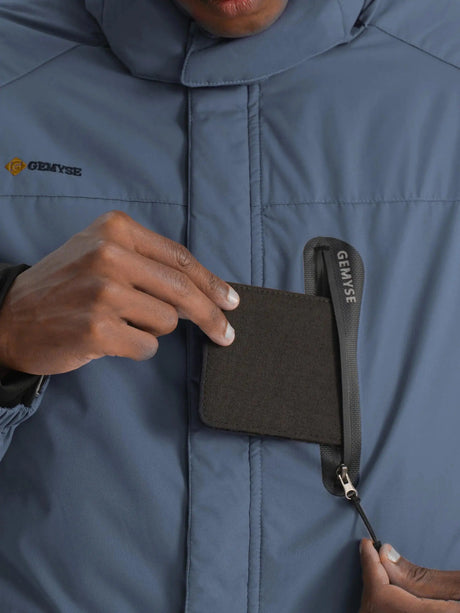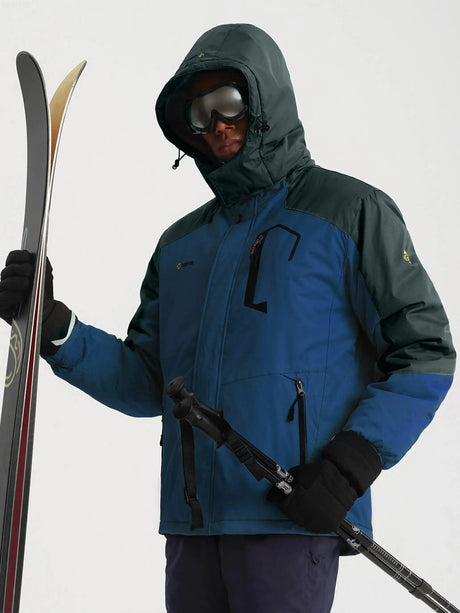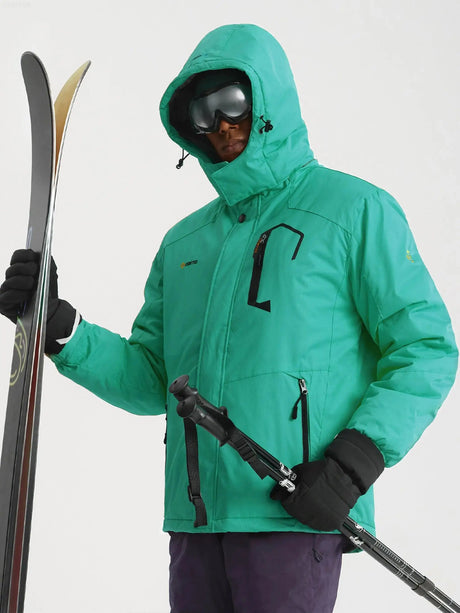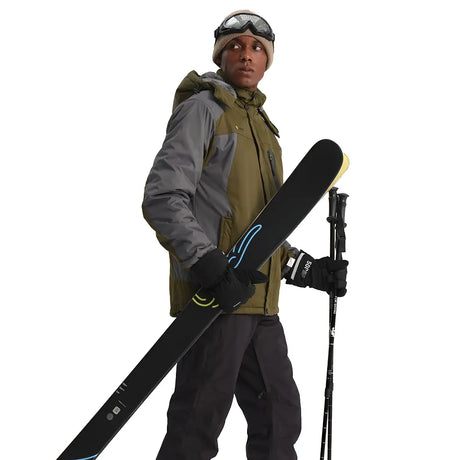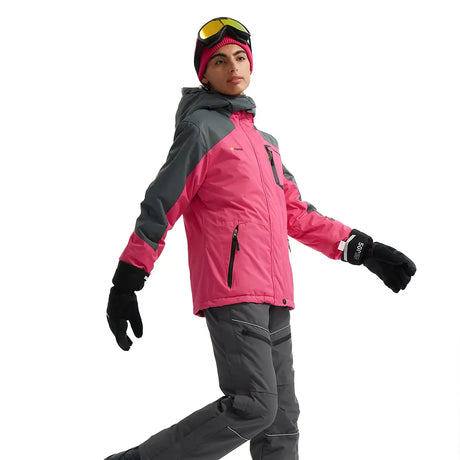what to wear under ski clothes
When hitting the slopes, wearing the right layers under your ski clothes is essential for comfort, warmth, and flexibility. Skiing and snowboarding require you to stay warm without overheating, so knowing what to wear under your ski gear is crucial. In this guide, we'll explore the best clothing choices for layering under ski outfits, ensuring you enjoy your time on the mountain without any discomfort. The right layering can make or break your ski experience, providing both the warmth you need and the breathability you require.
Layering is the key to staying comfortable while skiing or snowboarding. By wearing multiple layers, you can regulate your body temperature more effectively. The layering system typically consists of three main layers:
Layering helps manage your body’s microclimate, which is the small layer of air close to your skin. This microclimate needs to be maintained at a comfortable temperature to keep you warm without causing sweat accumulation. A good layering system allows sweat to evaporate, preventing chills from dampness.
The layering system is traditionally broken down into three essential components:
- Base Layer: This is the layer closest to your skin and is responsible for moisture management.
- Middle Layer: Provides insulation to keep you warm.
- Outer Layer: Protects you from wind, snow, and rain.
The ability to add or remove layers as weather conditions change is what makes layering so effective. On colder days, you might add an extra middle layer or choose a heavier outer layer. In milder conditions, you could opt for lighter layers to prevent overheating.
The base layer is essential for moisture control. When you're active on the slopes, you'll sweat, and it's crucial to keep that moisture away from your skin to avoid getting cold. Here's what to consider:
- Merino Wool: Known for its excellent moisture-wicking properties and softness, merino wool is a top choice for many skiers. It naturally regulates temperature and resists odors, making it perfect for extended wear.
- Synthetic Fabrics: Materials like polyester or nylon are also good at wicking moisture and tend to dry quickly. They are often more affordable and durable compared to natural fibers.
- Avoid Cotton: Cotton retains moisture, which can make you feel cold and damp. When wet, cotton loses its insulating properties, making it unsuitable for high-energy activities in cold weather.
Choose a base layer that fits snugly against your body. This ensures optimal moisture-wicking and prevents bunching under your other layers. A close fit also helps to trap body heat, enhancing insulation.
The base layer should be comfortable enough for prolonged wear. Consider seams and stitching that might cause irritation over time. Flatlock seams are a good option to minimize chafing, especially when worn under tight-fitting ski gear.
The middle layer acts as an insulator, trapping warm air close to your body. Depending on the temperature, you might choose thicker or thinner insulation.
- Fleece Jackets: Lightweight and breathable, fleece is a popular choice for insulation. Fleece retains warmth without adding much weight, and it layers well under an outer shell.
- Down Jackets: Offer excellent warmth-to-weight ratio but can be bulky. Down is great for dry conditions but loses some of its insulating properties when wet.
- Synthetic Insulation: Provides warmth even when wet, making it a versatile choice. It is often used in challenging weather conditions where moisture is a concern.
In 30-degree weather, you might opt for a lighter middle layer since the temperatures are milder. However, if you're prone to feeling cold, a thicker layer might be necessary. Assessing the weather forecast and your personal comfort levels can help you make the best choice.
Sometimes, combining two lighter middle layers can offer more versatility than a single thick layer. This allows you to adjust your insulation throughout the day as temperatures fluctuate.
The outer layer, often a ski jacket and pants or a ski suit, is designed to protect against wind, snow, and rain.
- Waterproof and Breathable: Ensure your outer layer repels water while allowing moisture to escape. Look for fabrics with high waterproof ratings and breathability scores to keep you dry from both external moisture and internal perspiration.
- Windproof: Protection against wind is crucial to maintain warmth. Windproof fabrics prevent cold air from penetrating and robbing your body heat.
- Ventilation: Look for jackets and pants with ventilation zippers to help regulate temperature. Pit zips and inner thigh vents are particularly useful for expelling excess heat without removing layers.
Your outer layer should allow for freedom of movement while skiing. Consider features like articulated knees and elbows, which accommodate the dynamic movements required for skiing or snowboarding.
Many outer layers come with added features such as snow skirts, adjustable hoods, and plenty of pockets for storage. Choose features that enhance your skiing experience, such as easy-access pockets for lift passes or goggles.
Under your snow bibs or ski pants, you should wear a base layer that offers both warmth and mobility. Consider thermal leggings made from merino wool or synthetic materials. These will keep you warm without restricting movement, and the snug fit will prevent any discomfort from bunching.
The base layer should fit comfortably under your ski jacket or shell. On colder days, you can add an extra mid-layer such as a lightweight fleece or down vest for additional warmth. This extra layer can easily be removed if temperatures rise, giving you flexibility throughout the day.
Similar to ski pants, wear a base layer underneath for warmth and comfort. Make sure the base layer isn't too bulky to avoid feeling restricted. Opt for materials that offer a good range of motion, as snowboarding demands flexibility and agility.
In 30-degree weather, you might not need as many layers, but it's still important to be prepared for changes in conditions. Here's a quick checklist:
- Base Layer: Lightweight and moisture-wicking to keep sweat away from your skin.
- Middle Layer: A thinner fleece or synthetic jacket to provide necessary warmth without bulk.
- Outer Layer: Waterproof and breathable jacket and pants to protect against unpredictable weather changes.
- Accessories: Don't forget a hat or helmet liner, gloves, and neck gaiter for added warmth. These accessories can be crucial in maintaining body heat and protecting exposed skin.
Weather conditions can change rapidly in mountainous areas. Be prepared to add or remove layers as needed to stay comfortable throughout the day.
In addition to layers, accessories play a vital role in maintaining warmth. Helmets, goggles, and neck gaiters provide additional protection against the elements, ensuring a safe and enjoyable skiing experience.
Choosing the right layers to wear under your ski clothes can make all the difference in your skiing experience. By understanding how to layer effectively and selecting the right materials, you'll stay comfortable and focused on enjoying the slopes. Whether you're skiing in 30-degree weather or in colder conditions, always prioritize moisture management, insulation, and protection against the elements. With the right gear, you'll be ready to tackle any mountain with confidence.
Remember, what you wear under your ski clothes significantly impacts your overall comfort, so take the time to prepare and choose wisely. Experiment with different materials and combinations to find what works best for you. Happy skiing!

